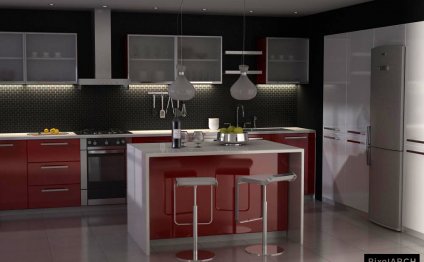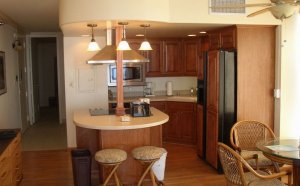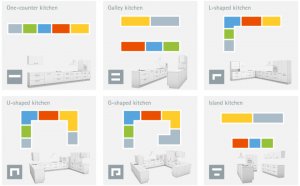
Designing your own kitchen online free
Dream Doors has the latest 3D virtual reality kitchen design software to help create your dream kitchen. With Dream Doors innovative 3D design software it makes it easy for you to visualise your kitchen ideas and experience your stunning new kitchen before it’s even manufactured. contact your local Dream Doors branch for more details.
The benefits of the Kitchen Design site
It is completely free to use.
With our easy-to-use design tool, you can draw your room, place cabinets and furniture from ready-made libraries and walk round the result in 3D. You can even design the base outline of your house and include furniture and bathrooms into your plan.
By designing your existing kitchen you will have the opportunity to change the kitchen doors, panels, toe kick and benchtops with your new proposed kitchen door designs and colours. This will enable you to view how your kitchen would look after your kitchen transformation. We then offer you the ability to receive a full quotation and/or site visit from one of our network of authorised dealers throughout New Zealand.
There are loads of useful design tips and ideas and links to other sites for expert advice and design inspiration.
If you wish you can save your designs so you can come back to them or leave your designs in the gallery for others to see.
You can leave your comments or add your own hints and tips to help others who visit this site.
Tips for Kitchen Design
This section of the website is intended to allow you to explore different design options for your new kitchen and to experiment with materials and styles of furniture and below are some tips and guide lines which might be useful in this process. This advice is provided for information only so always check the current safety regulations, which are frequently changed and please always follow manufactures’ instructions.
When you have produced your design ideas we recommend you talk to your local Dream Doors expert for design input before you take the plunge and order online from Dream Doors. Their advice is free and it could save you $1000’s if you make a mistake!
Measure your room
To begin, very carefully measure the space where you are going to install your kitchen, remembering that walls are not always square and floors are not always level. You should take the measurements in millimeters. Remember also to record the position and size of all doors and locations of windows (including their height from the floor). Also note the position of other “fixed” items such as radiators, sockets and switches, gas supply and waste location, unless of course, you plan to completely remodel your kitchen or fit it into a new extension.
Planning your kitchen
Naturally, this depends upon the amount of space you have, how you want to use the kitchen and how much money you want to spend, so by speaking to your local Dream Doors branch they can advise and guide you through the vast range of products that is available in the marketplace today. There is no piece of kitchen computer software anywhere that encompasses every single type of new kitchen unit, kitchen door, appliances and sinks so a quick chat to your local Dream Doors branch will help you through this process.
Location of services
Check the position of your services; electricity, gas, waste etc and that your new units will not obstruct them (for example, can you get to turn off a radiator or is the stop tap accessible). Check that the sink, waste disposal etc are within easy reach of the waste outlet, unless you plan to move it.
Introduction
If you use the free Dream Doors Online Design system you begin by drawing your room and putting in windows, doors and locating service etc. At this stage don’t worry about the room finishes or the style or colour of the kitchen furniture you are going to use. You can do that in 3D when you have done the kitchen layout.
Next you should layout the units you want in your kitchen. Select the kitchen catalogue. This catalogue contains general types of kitchen units which are not specific to any manufacturer but are intended to give you an impression of how your new kitchen will look.
We recommend that you start by adding base units. If you are designing an L or U shaped layout you should start by positioning a corner base unit and working out from there. This gives you a better idea of how units will fit together. You can use some of our sample layouts Dream Doors have provided as guides. At any time in your kitchen design process you can walk through your new kitchen in 3D then continue to make changes until you are happy.
Fitting things in
If it is practical and you have enough space to do it fitting a kitchen made from straight runs is far easier than ones where you have to fit around corners to make L or U shaped kitchen constructions. Of course this is not always possible but it does avoid the problem of wasted space in corners (and corner units and their accessories often cost more) and the more costly exercise of making joints in worktops. You also need to bear in mind that corners are probably never at right angles, so when fitting units into a corner, take into account that the units next to the corner may have to be “adjusted” in order to make them fit. In particular if you are fitting units along a wall which lies between two other walls don’t fit the units in too tightly. Allow a tolerance at the ends so adjustments can be made and any gaps at the ends taken up with filler panels when everything is finally positioned.
Fitting benchtops
All benchtops can be installed by a Dream Doors professional. Materials such as granite are very specialized and are always fitted by New Zealand stone craftsman employed as sub-contractors by Dream Doors. Laminate work surfaces can be installed by the DIY enthusiast in most cases. Laminate benchtops can be cut with a fined toothed saw but for best results the cut ends should be finished with a router and sealed. Laminate worktops are usually supplied with a length of edging strip which you should glue (with contact adhesive) onto any cut edges which can be seen. All cut edges should be sealed with PVA adhesive or tape to prevent damp penetration.
Share this Post
Related posts
Design your own kitchen free
Whether it is a new kitchen, doors around the home, update to your flooring or bathroom cabinets, then our FREE Design &…
Read MoreDesign your own kitchen layout
When embarking on a new kitchen the first and most important step is to plan the layout in a way that makes the best use…
Read More











